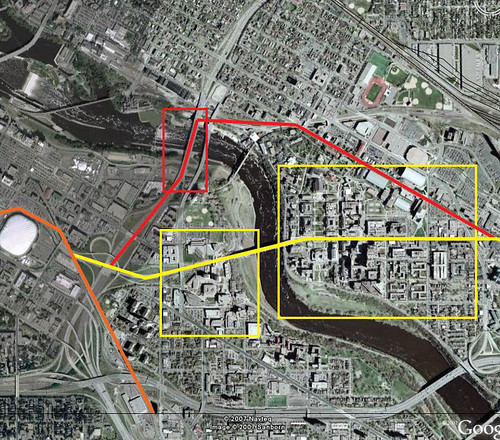Gov. Tim Pawlenty said Friday the state may be willing to pay the extra $20 million to $30 million it would cost to include light-rail transit on the Interstate 35W bridge.Pawlenty's comments came after nearly two weeks of debate and division among state, Minneapolis and federal officials over whether the replacement for the collapsed span should be built with the potential to carry light rail.
Before Pawlenty's comments, Minneapolis officials modified their stance, saying the bridge should have light-rail capacity but need not be built specifically for the Central Corridor line, which is to connect downtown Minneapolis and St. Paul. The city's role could be pivotal because, under state law, it will be asked to provide "municipal consent" for the bridge design.
A disagreement over light rail could stall the project for months, jeopardizing the state's plans to push for completion by the end of 2008.
This is a good sign that the Governor understands or at least is willing to consider the future needs and not just the present. The Star Tribune also reminds everyone that a transportation package needs to be passed as they reiterate what I had thought in the previous posts:
What is clear, however, is that routing the Central Corridor light-rail line across a new bridge doesn't work. Changing its route would eliminate a critical West Bank station at the University of Minnesota, attract fewer riders and add time and distance to the line. That, in turn, would lower the project's federal rating and risk its funding.
If a future rail line were projected for the Interstate Hwy. 35W corridor, a stronger bridge would make sense. But no such line is projected. Instead of obsessing on the replacement bridge, officials should focus on passing a comprehensive transportation bill that repairs bridges and actually pays for the new roads and transit lines that the state has needed for so long.

